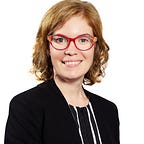Are contact lenses safe for kids?
There is a wealth of research information to show that specific types of contact lenses are the best way to both correct your child’s vision and slow the progression, or worsening of myopia (shortsightedness). If you are interested in evidence based myopia management for your child, the discussion with your optometrist will most likely include contact lenses. While some children will never be willing or suitable to wear contact lenses, for various reasons, the truth of the matter is most kids can wear contact lenses safely, happily and successfully. Here’s the science.
Firstly, there appears to be no additional risk of adverse events (eye inflammations and infections) when commencing contact lens wear as a child (aged 8–12 years) compared to as a teenager. A study evaluating outcomes after ten years of contact lens wear in people who started wearing contact lenses as either kids or teens found no difference between these groups.
Secondly, the risk of an eye infection (the type us optometrists are most concerned about is a corneal ulcer, called ‘microbial keratitis’) is very low in the types of contact lenses optometrist typically fit to kids. The safest way to wear contact lenses are daily disposable lenses, which carry a risk of 2 events per 10,000 patient wearing years. This means that if your child wears contact lenses for 10,000 years (which she probably wont!), she will be at average statistical risk of two eye infections. Low odds, correct? There are two types of daily disposable lenses available across the world for myopia management — Coopervision’s Misight and Visioneering Technologies NaturalVue — but your optometrists’ access to the lenses varies depending on what country you’re in.
If your child wears reusable soft contact lenses — in myopia management these are ‘multifocal’ contact lenses — these lenses are worn each day and then cleaned, stored overnight and kept usually for a month. The risk of infection increases with these, because of the extra bits and pieces involved (the storage case and solution), and not getting a fresh lens every day as you do with daily disposables. So the risk of infection with these lenses is 12 per 10,000 patient wearing years. Eeek, this is six times higher than daily disposables?? Yes, but the risk is still 1 eye infection for every 1,000 years your child wears contact lenses. He probably won’t wear them that long, either! Most optometrists have access to some type of multifocal contact lens, suitable for myopic children.
If your child wears overnight orthokeratology — lenses which gently reshape the surface of the cornea so no glasses or contact lenses are required during the day — the risk is similar to the multifocal lenses, at 13 per 10,000 patient wearing years.
What’s the riskiest way to wear contact lenses? Overnight wear of soft contact lenses, which carries double the risk of multifocal or overnight OrthoK lenses, of 25 per 10,000 patient wearing years. Rarely would chidren be fit in this way, unless there are special circumstances.
And here’s the final important piece of research. Children (aged 8–12) appear to be safer soft contact lens wearers than teens, likely due to better compliance and closer parental supervision.
This is a reassuring fact for both parents and optometrists fitting children with contact lenses — if you’re comfortable considering contact lens wear for your 14 year old, then from a safety point of view, you should consider your 9 year old equally suitable. Of course, the individual child and family’s capabilities are the primary deciding factor — if you have contact lens experience yourself, this often improves confidence for undertaking a contact lens journey for your child. The key message here being age shouldn’t be the primary factor in deciding whether your child is suitable for contact lenses, and regardless of which type is most suitable for them (as your optometrist will advise you), the safety profile is good.
